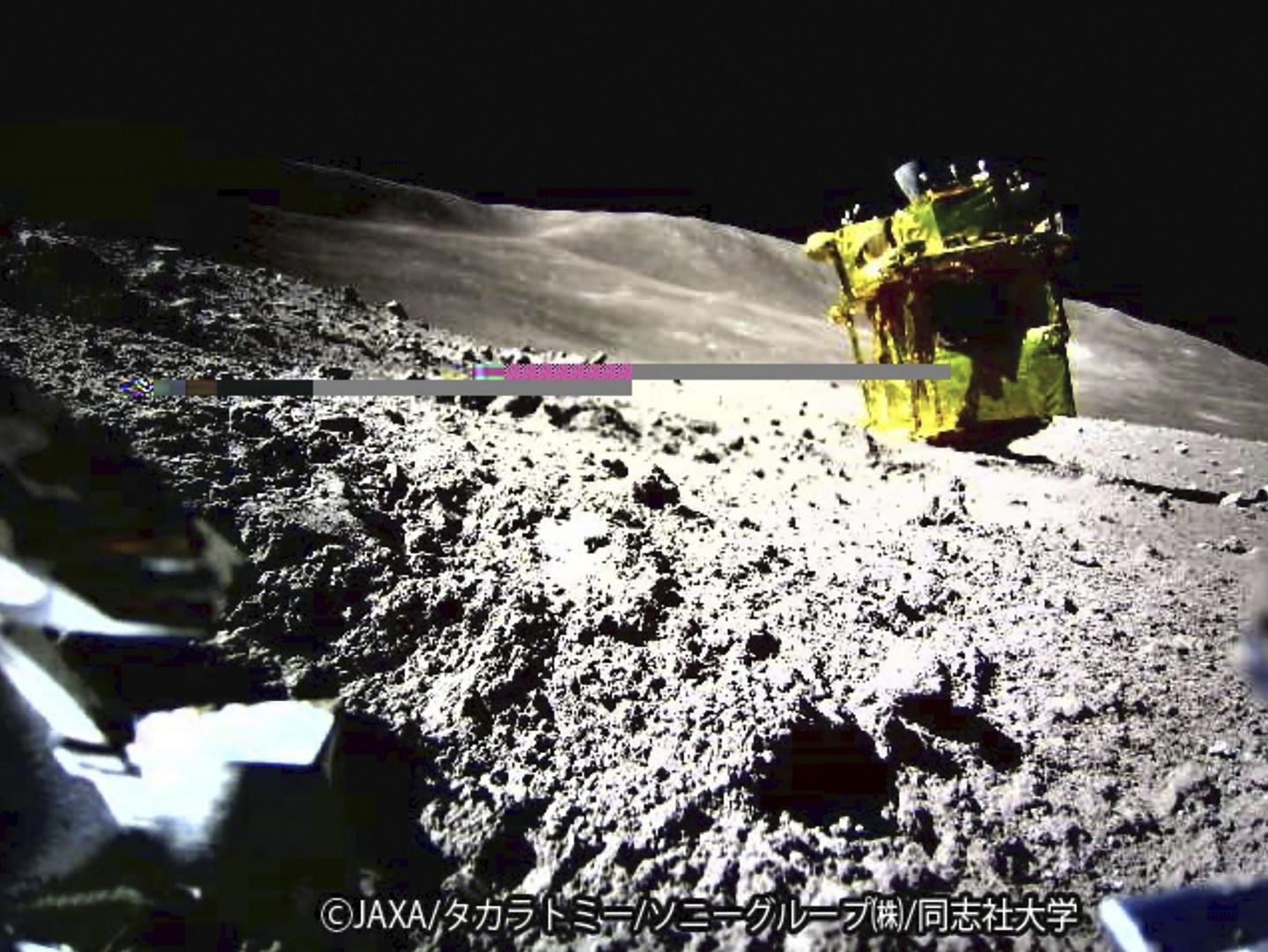
SEOUL, South Korea – Japan’s lunar module resumed operations on the moon late Sunday, overcoming problems with its solar panels, according to the Japan Aerospace Exploration Agency, or JAXA, quoted by Japanese media on Monday.
While the reset will enable it to conduct research on the moon’s origins, its primary mission has already been achieved — a mission with key ramifications for future lunar exploration.
The “Smart Lander for Investigating the Moon,” or SLIM, landed on the moon’s surface on Jan. 19, after having been launched last September.
The SLIM, which released two robotic lunar rovers with data links to Earth on the moon’s surface, has been nicknamed the “Lunar Sniper” due to its accurate touchdown capability.
Unlike any previous mission to the moon’s surface, it proved it could make a landing within 100 meters of a target site: SLIM landed 55 meters from its chosen location in the Shioli Crater, in the moon’s Sea of Nectar.
The landing would have been even closer, but SLIM maneuvered to evade ground obstacles during its run-in, JAXA said.
“SLIM’s mission architecture hopes to shift the standards of lunar landing missions, from touching down where it’s easy, to setting down exactly where desired,” wrote the nonprofit Planetary Society after last month’s touchdown. “The main objective of the mission was to demonstrate these landing capabilities.”
On prior landing missions, “areas of probable landing” were “on the order of kilometers in terms of length and breadth,” the society explained.
It called Tokyo’s achievement, “key to the future of scientific lunar exploration.”
One ramification is for any future facility on the moon.
SLIM’s proof of concept means multiple missions could land near each other, stockpiling materials for any base, manned or robotic. If the facility were manned, it potentially means astronauts could be both inserted into the location and extracted from it.
America’s Apollo, from 1968 to 1972, remains the only program to land men on the moon, but Japan’s feat makes it the fifth country to place a working craft on the lunar surface. It follows the Soviet Union in 1959, the USA in 1962, China in 2013, and India, which joined the field in August 2023.
Russia’s most recent attempt, in 2023, failed when its vehicle crashed on the moon: a “hard landing.”
Japan’s success is good news for the U.S.-led “Artemis” program, a multinational moon-landing and space exploration effort. According to NASA, “We will build an Artemis Base Camp on the [Lunar] surface.”
Per the U.S. State Department, Japan is a signatory to the Artemic Accords — a partner in the program.
Another useful lesson from the Japanese experience — like India’s lunar landing last year — is economic.
“SLIM also aimed to show that small, relatively inexpensive spacecraft are capable of impressive exploration feats,” according to specialty media Space.com. “Its mission cost about 18 billion yen ($120 million) to develop.”
SLIM was not a total success. After the exhilaration of the touchdown had passed, there was disappointment.
The SLIM landed in working order – but upside down. As a result, its solar panels were misaligned and appeared not to be working. That left SLIM with only a few hours of battery power.
Monday’s development suggests solar power has been restored. JAXA officials had hoped, after its rocky landing, that changes in the sun’s angle on the moon’s surface could reach the misaligned panels.
While a near-pinpoint landing was the primary mission task — successfully concluded — the secondary task was to undertake research designed to understand the origin of the moon by analyzing surface minerals.
With power back on, that mission, too, is back on, though once the next freezing lunar night descends on Thursday, it is expected that SLIM will shut down.












